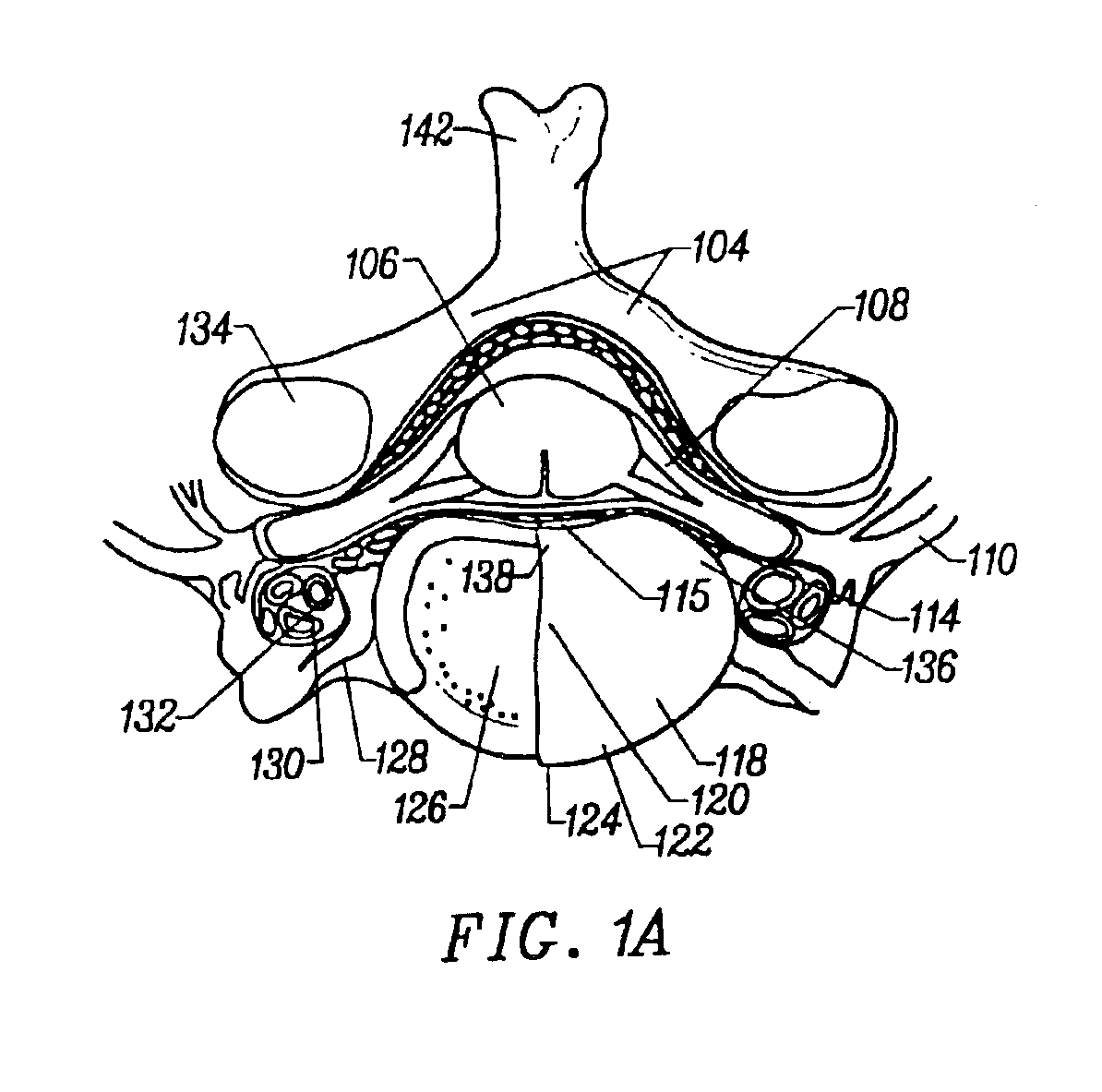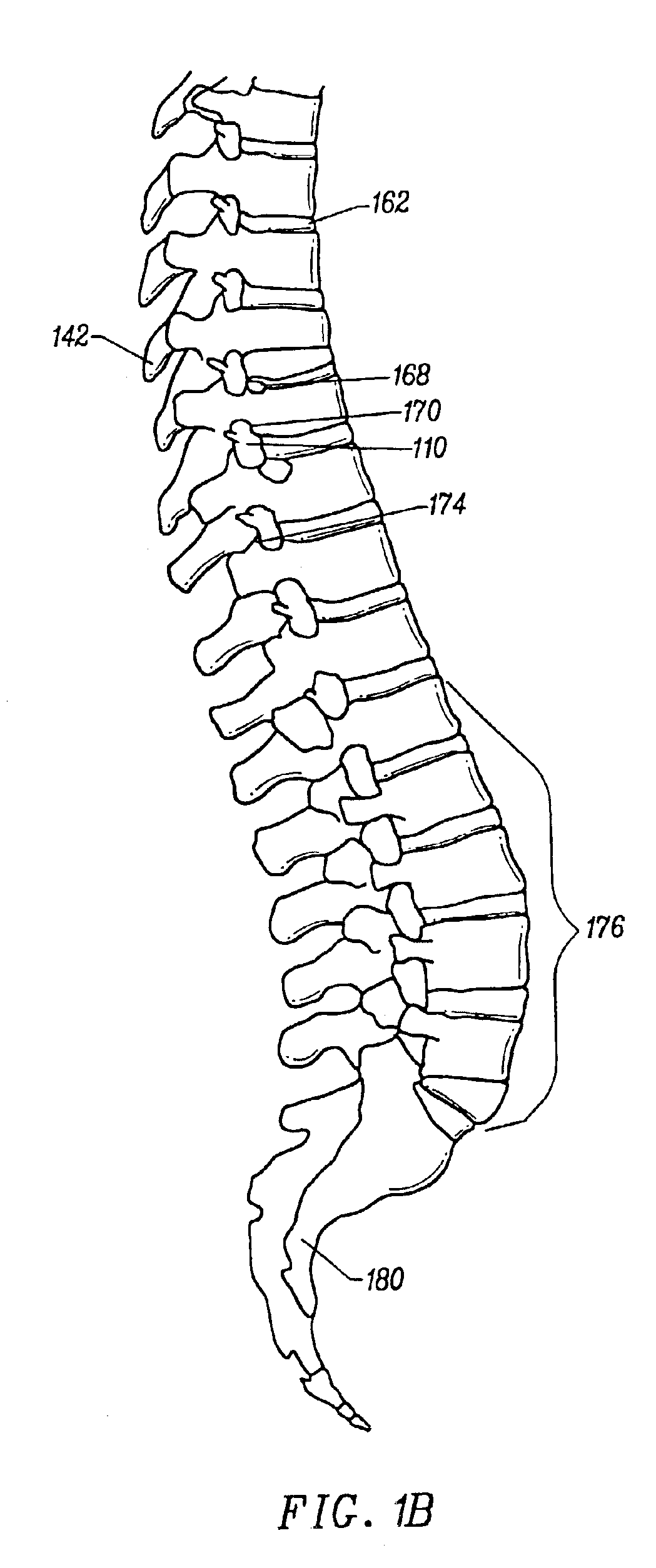Method and apparatus for treating annular fissures in intervertebral discs
a technology of annular fissures and discs, which is applied in the direction of prosthesis, therapy, surgical forceps, etc., can solve the problems of creating fissures, irritating surrounding structures, pain and discomfort,
- Summary
- Abstract
- Description
- Claims
- Application Information
AI Technical Summary
Benefits of technology
Problems solved by technology
Method used
Image
Examples
Embodiment Construction
[0046]The present invention provides a method and apparatus for diagnosing and treating intervertebral disc disorders, such as, for example, tears of fissures of the annulus fibrosus, herniations, and circumferential bulging, which may or may not be accompanied with contained or escaped extrusions.
[0047]In general, an apparatus of the invention is in the form of an externally guidable intervertebral disc apparatus for accessing and manipulating disc tissue present at a selected location of an intervertebral disc having a nucleus pulposus and an annulus fibrosus, the annulus having an inner wall. Use of a temperature-controlled energy delivery element, combined with the navigational control of the inventive catheter, provides preferential, localized heating to treat the fissure. For ease of reference to various manipulations and distances described below, the nucleus pulposus can be considered as having a given diameter in a disc plane between opposing sections of the inner wall. Thi...
PUM
 Login to View More
Login to View More Abstract
Description
Claims
Application Information
 Login to View More
Login to View More - R&D
- Intellectual Property
- Life Sciences
- Materials
- Tech Scout
- Unparalleled Data Quality
- Higher Quality Content
- 60% Fewer Hallucinations
Browse by: Latest US Patents, China's latest patents, Technical Efficacy Thesaurus, Application Domain, Technology Topic, Popular Technical Reports.
© 2025 PatSnap. All rights reserved.Legal|Privacy policy|Modern Slavery Act Transparency Statement|Sitemap|About US| Contact US: help@patsnap.com



